All products featured are independently chosen by us. However, SoundGuys may receive a commission on orders placed through its retail links. See our ethics statement.
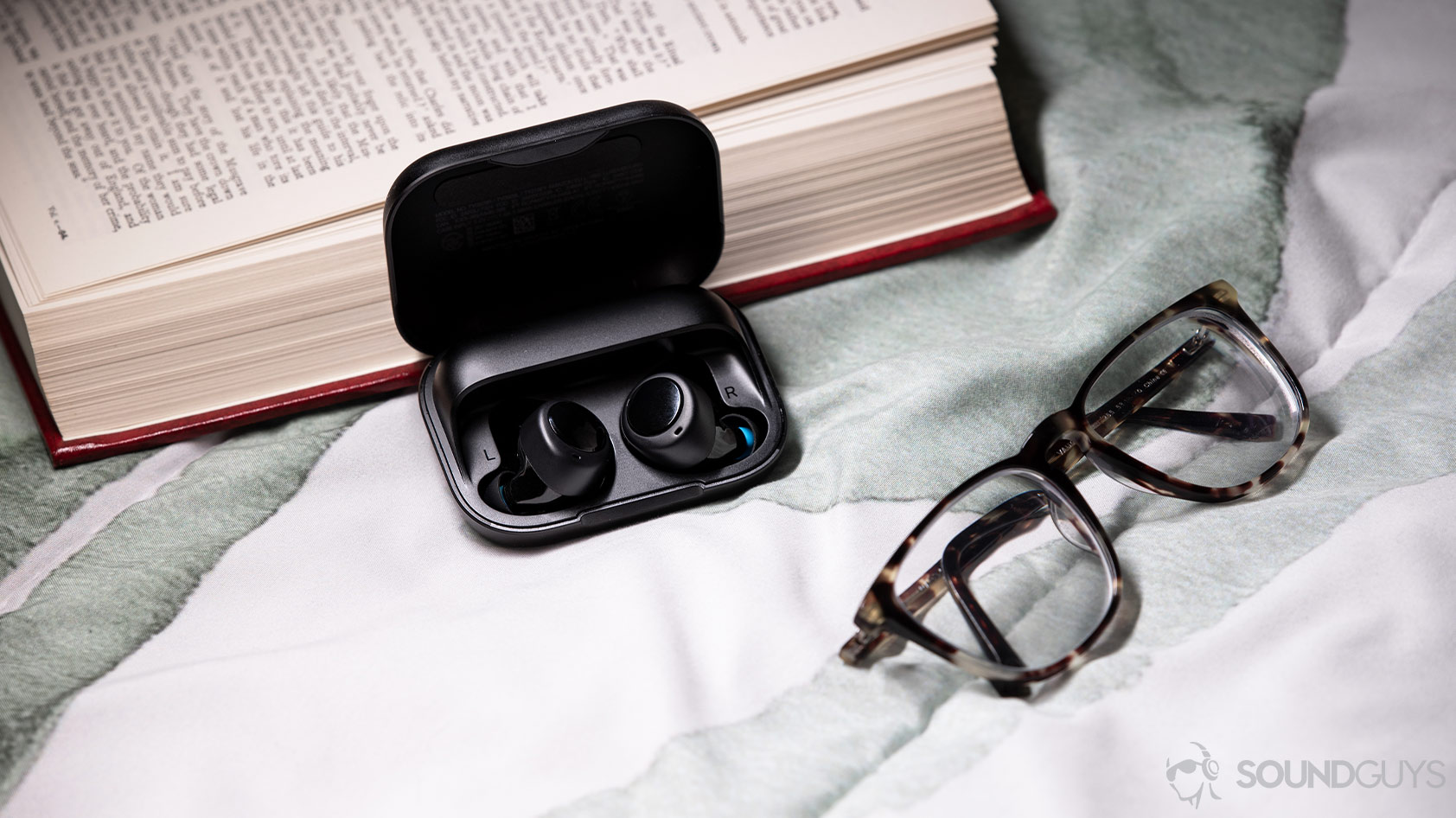
Amazon Echo Buds review
May 7, 2021
Amazon Echo Buds
Amazon is coming for your ears with the Amazon Echo Buds which include noise reduction by Bose. If you’re an Android user in search of smart earbuds, these might be the answer to your technological wishes. Although they have their shortcomings, the Alexa Echo Buds are some of the best bang-for-your-buck smart earbuds you can get.
Editor’s note: this Amazon Echo Buds review was updated on May 7, 2021, to include more product information and more information about the second generation buds.
Additionally, this review is for a discontinued product. Amazon released the Echo Buds (2nd Gen) in 2021.
Who should get the Amazon Echo Buds?
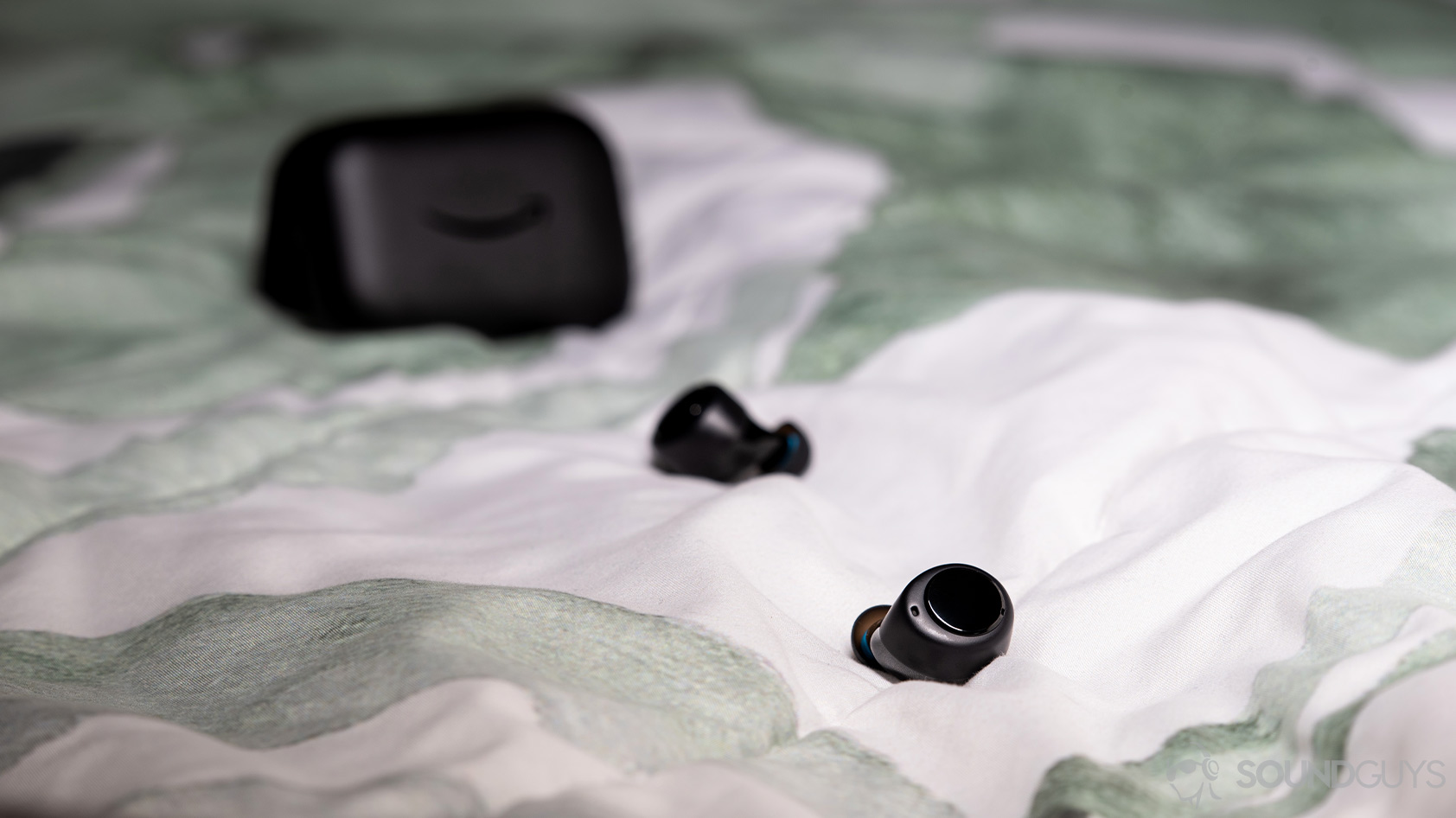
- Commuters will benefit from Bose’s noise reduction technology. While it can’t outperform the Sony WF-1000XM3 noise canceling, it’s surprisingly effective and certainly better than passive isolation.
- Hands-free enthusiasts should think about getting the Amazon Echo Buds for voice access to Alexa.
- Athletes may want to pick up the Alexa Echo Buds because the plastic housings are IPX4 water-resistant.
What are the Amazon Echo Buds like?

The Echo Buds are made from plastic, and not the durable plastic we’ve seen with the Jaybird Vista 2 or even the Apple AirPods (3rd generation). Not only does it feel cheap, but the case is slippery and easy to drop. Perhaps it’s a comfort to know that even after multiple drops, the case looks just as it did when I opened the Amazon Echo Buds box.
A glossy circular touch panel adorns each bud. By default, touch gestures are configured so double-tapping either earbud alternates between noise reduction and passthrough listening modes. Holding your finger on either touch panel accesses your smartphone’s default assistant (e.g., Google Assistant or Siri). You can remap the controls from the Alexa app.
The earbuds are lightweight and comfortable to wear, assuming you don't have small ears.
These buds aren’t overloaded with sensors like the Beats Fit Pro, but there are proximity sensors in both housings for auto play/pause functionality. Unlike the Galaxy Buds Plus and Buds Pro, which require you to remove both buds simultaneously, removing either Echo Buds earbud will pause media playback.
Amazon provides listeners with three pairs of ear and wing tips, so you can get a comfortable fit. If you have smaller-than-average ears, the housings may be uncomfortable even without the wing tips. For most, though, the pre-installed medium ear tips should suffice.
Are the Amazon Echo Buds good for working out?

The Echo Buds merits an IPX4 water-resistant rating, making it more durable than the Apple AirPods (2nd generation) and Samsung Galaxy Buds Plus—the former of which lacks an IP rating, and the latter of which has just an IPX2 rating. Athletes of all sorts can exercise freely with the Echo Buds, so long as they remain out of the water completely.
On November 23, 2020, Amazon released a firmware update available through the Alexa app, which permits fitness tracking features. After updating the headset, you may say, “Alexa, begin my workout,” and the earbuds will track basic information like duration, steps, calories, distance, and pace. You can continue to control music playback with your voice once your workout has begun.
We address how to update the firmware a little farther down in this review. To enable workout-tracking, follow the steps below:
- Open the Alexa app.
- Tap More > Settings > Account Settings > Workouts > Create Workout profile.
How do you connect the Echo Buds?
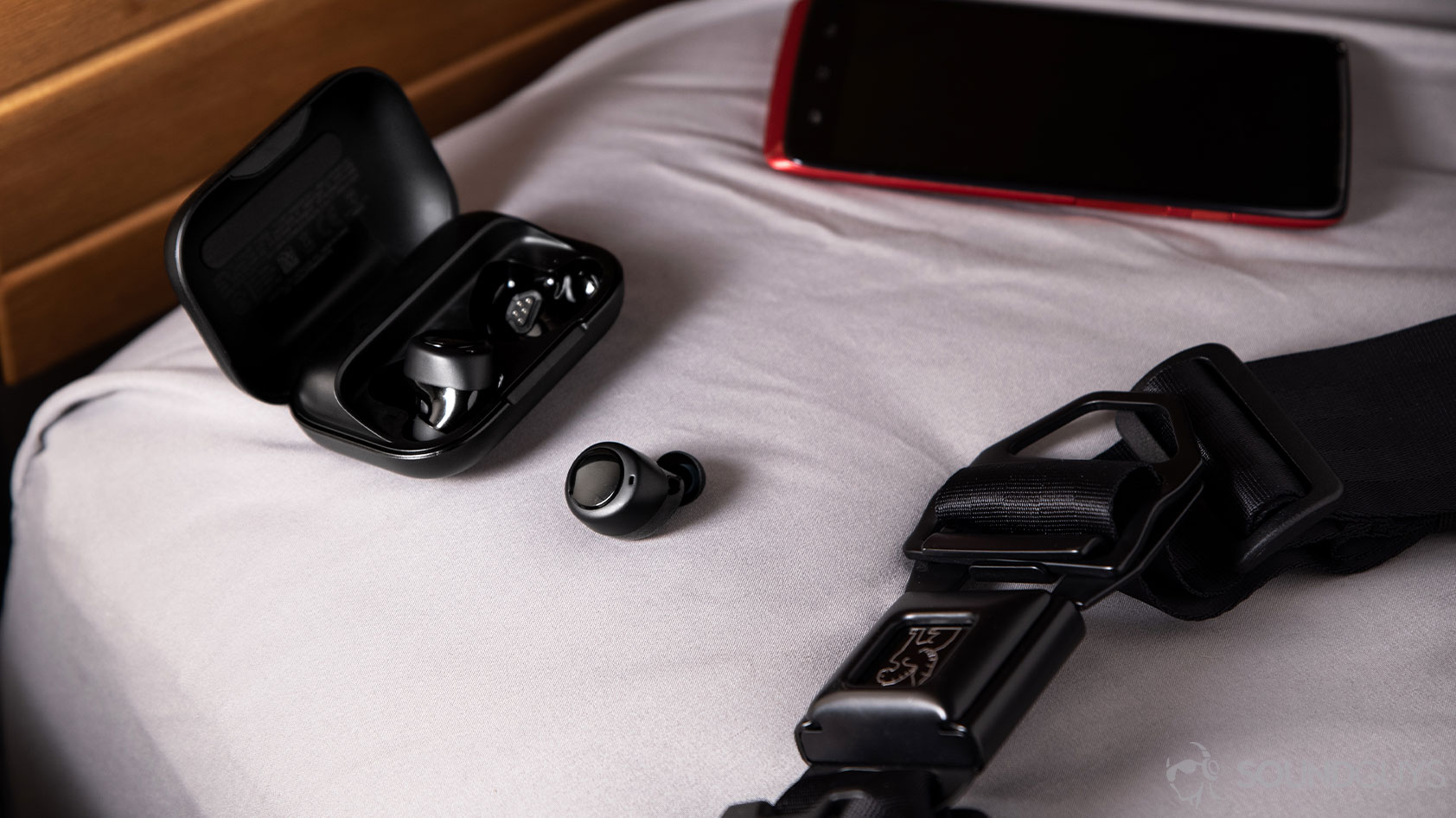
Open the case to reveal the Echo Buds and be sure to leave the buds in place as you depress the button on the bottom of the case. Hold this down until the single LED flashes blue: this indicates pairing mode. From there, select “Echo Buds” from your smartphone’s Bluetooth menu. Regardless of whether you have an iPhone or Android device, this pairing process is universal.
The Bluetooth 5.0 earbuds support AAC for high-quality streaming over iPhones and other iOS devices but lack aptX support. This means we Android users are left without a reliable high-quality wireless codec. For better or worse, most listeners are unable to differentiate between codec qualities, especially if more pressing issues, like auditory masking, are present. It uses the Realtek RTL8763B Bluetooth System on Chip, which facilitates low power consumption alongside a host of other abilities.
How to update the Amazon Echo Buds
On July 15, 2020, Amazon addressed an overheating issue that users had reported with the Echo Buds. The update to software version 318119151 remedies this issue, ensuring user safety. In order to apply a software update, all you have to do is connect the Echo Buds to a device with the Amazon Alexa app. (You must be signed into the Alexa app for it to automatically download).
To ensure that the software update went through accordingly follow the steps below:
- Open the Echo Buds case and keep both earbuds inside.
- Confirm that the Echo Buds is actively connected to the device.
- Open the Alexa app and select Devices in the bottom-right corner of the screen.
- Tap Echo & Alexa, and then tap Echo Buds.
- Scroll down to the About section, and confirm the update.
How to set up the Echo Buds through the Amazon Alexa app
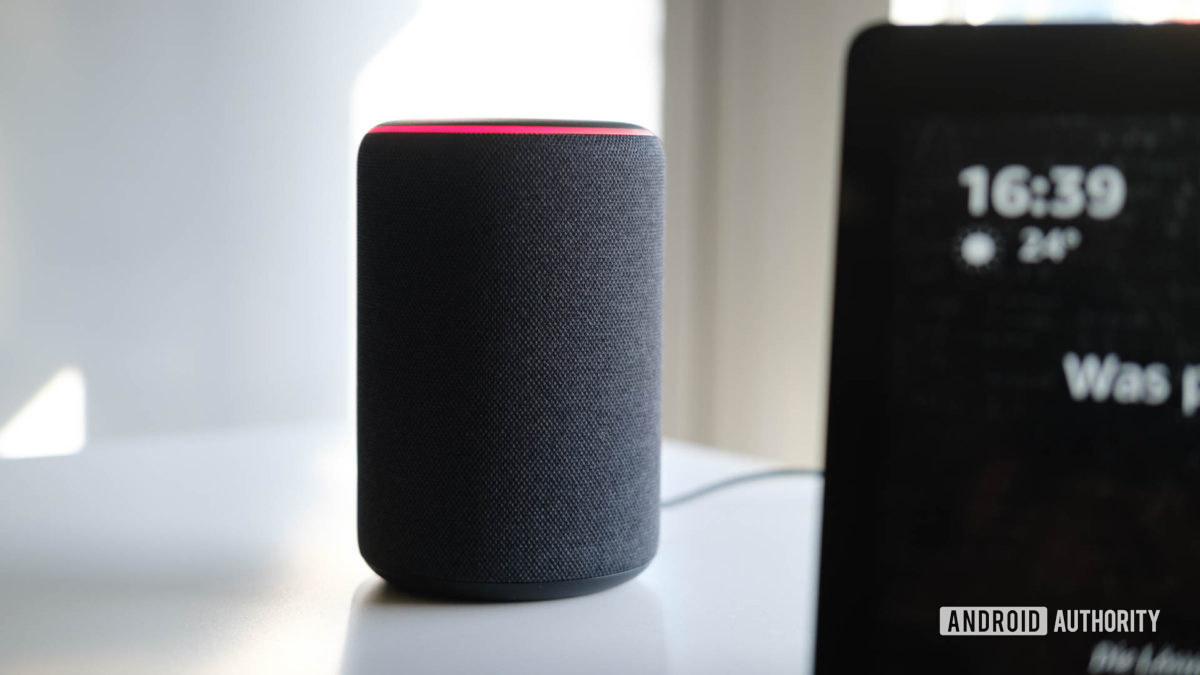
In order to enjoy all Amazon Echo Buds perks, set up the smart true wireless earbuds directly through the Alexa app. If you’re familiar with Alexa smart speakers, you’ve likely jumped through these hoops before. It takes just a few moments and affords many benefits like setting timers and reminders, checking emails, making inquiries, and any of its tens of thousands of skills.
- Open the Alexa app and tap the “Devices” tab.
- Tap the “+” sign in the top-right corner of the screen. Then select “Add Device.”
- In the following window, choose “Amazon Echo” and scroll until you see “Echo Buds.” A window will appear requesting location access followed by a pop-up requesting you to cease battery optimization. Hit accept.
- Choose “Echo Buds” and continue through the guided setup, which includes adjusting passthrough volume. A brief video will then play.
Upon completion, you’ll be brought back to the Alexa app home screen where you may mute the microphone and alternate listening modes. By clicking the Echo Buds card, you can make further adjustments like deactivating both listening modes, making basic EQ adjustments, and taking the ear tip sizing test, similar to what listeners may do with the Apple AirPods Pro.
Alternatively, the Sony WF-1000XM3 now support Amazon Alexa along with Google Assistant.
During the fit test, a series of beeps are played during a continuous low rumble for a few seconds. You’re then given a simple readout of the results; if both are optimal it will read “great” for both the left and right earbud.
Dont miss: Amazon Echo (4th gen) review
Do the Echo Buds have good battery life?
Battery life surpasses Amazon’s specified five hours of playtime as our testing yielded 5 hours, 40 minutes of playback with noise reduction on. While this battery life still can’t touch that of the Beats Powerbeats Pro, it is better than the AirPods Pro and Sony WF-1000XM3.
The Echo Buds case quick charges the buds: just 15 minutes in the case affords two hours of listening. Combined battery life from the earbuds and the case supplies up to 20 hours of playback. To my disappointment, though, the case charges via microUSB.
Battery depletion is uneven between the two earbuds. The right earbud ran out just about 20 minutes before the left one. You’re unlikely to notice this as the earbuds are always charging when in the case, but it’s peculiar and something we haven’t really seen with other true wireless earbuds, regardless of price point.
How well does the Bose noise reduction work on the Echo Buds?
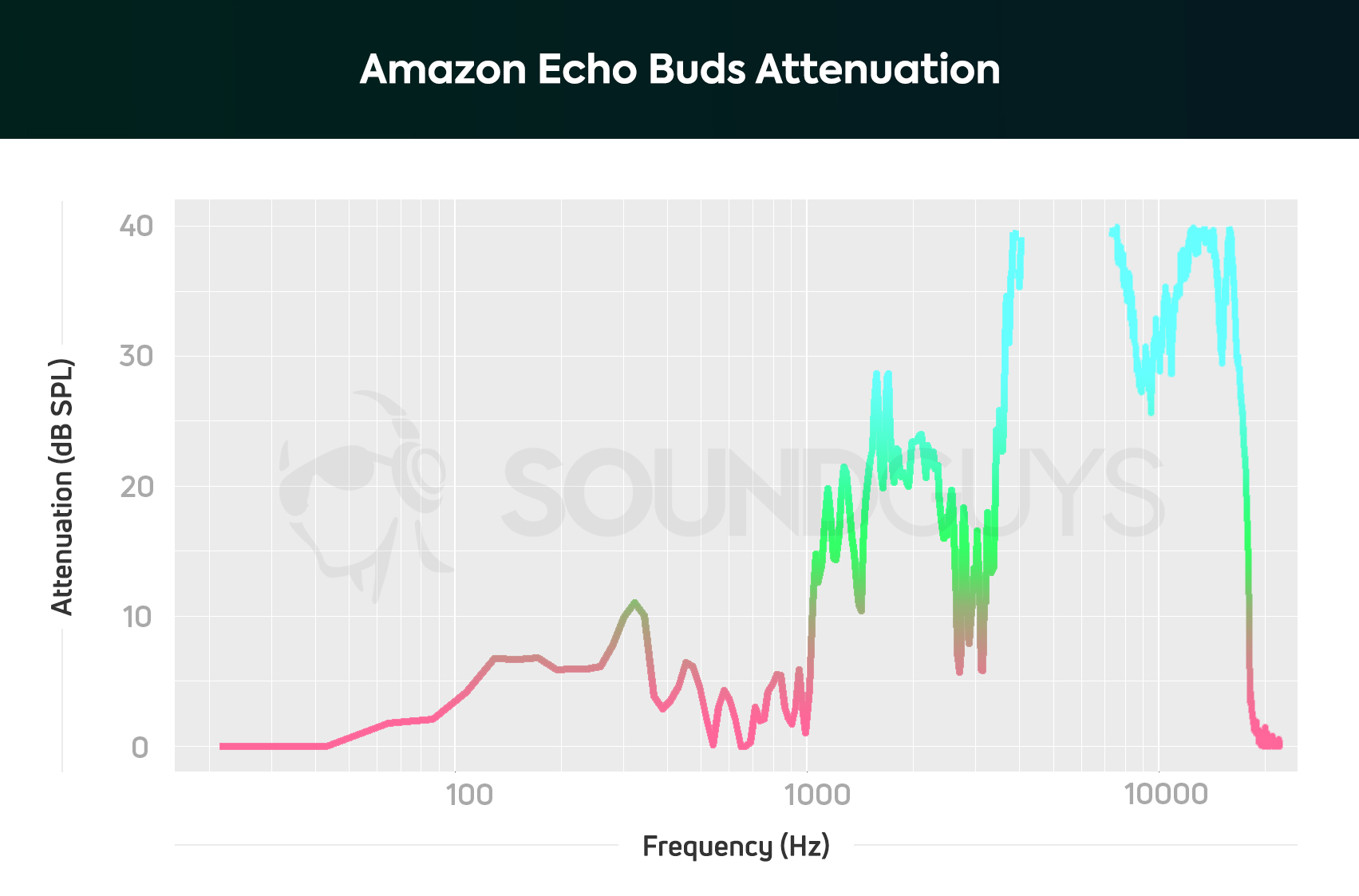
Seeing as Bose was one of the earliest adopters of Alexa voice integration with its QuietComfort 35 II headphones, it only makes sense that Amazon would entrust the premium audio company to manufacture an effective noise reduction chipset. To clarify: active noise reduction (ANR) works differently than active noise canceling (ANC). The latter uses destructive interference to create a quiet environment while the former simply reduces background noise without nullifying it.
To alternate between noise reduction and passthrough hearing, double-tap either earbud.
Leave it to Bose to create noise reducing earbuds that work better than some active noise canceling alternatives. Again, you’re not going to experience total silence with the Echo Buds, but low-frequency attenuation is surprisingly effective: air conditioner rumbles may be rendered approximately one-third to half as loud with ANR on. Distant chatter and outdoor traffic sound quieter as do sounds above 1kHz (mainly due to a proper fit). If you want top-tier active noise cancellation, get the Sony WF-1000XM4 or Bose QuietComfort Earbuds.
How do the Amazon Echo Buds sound?
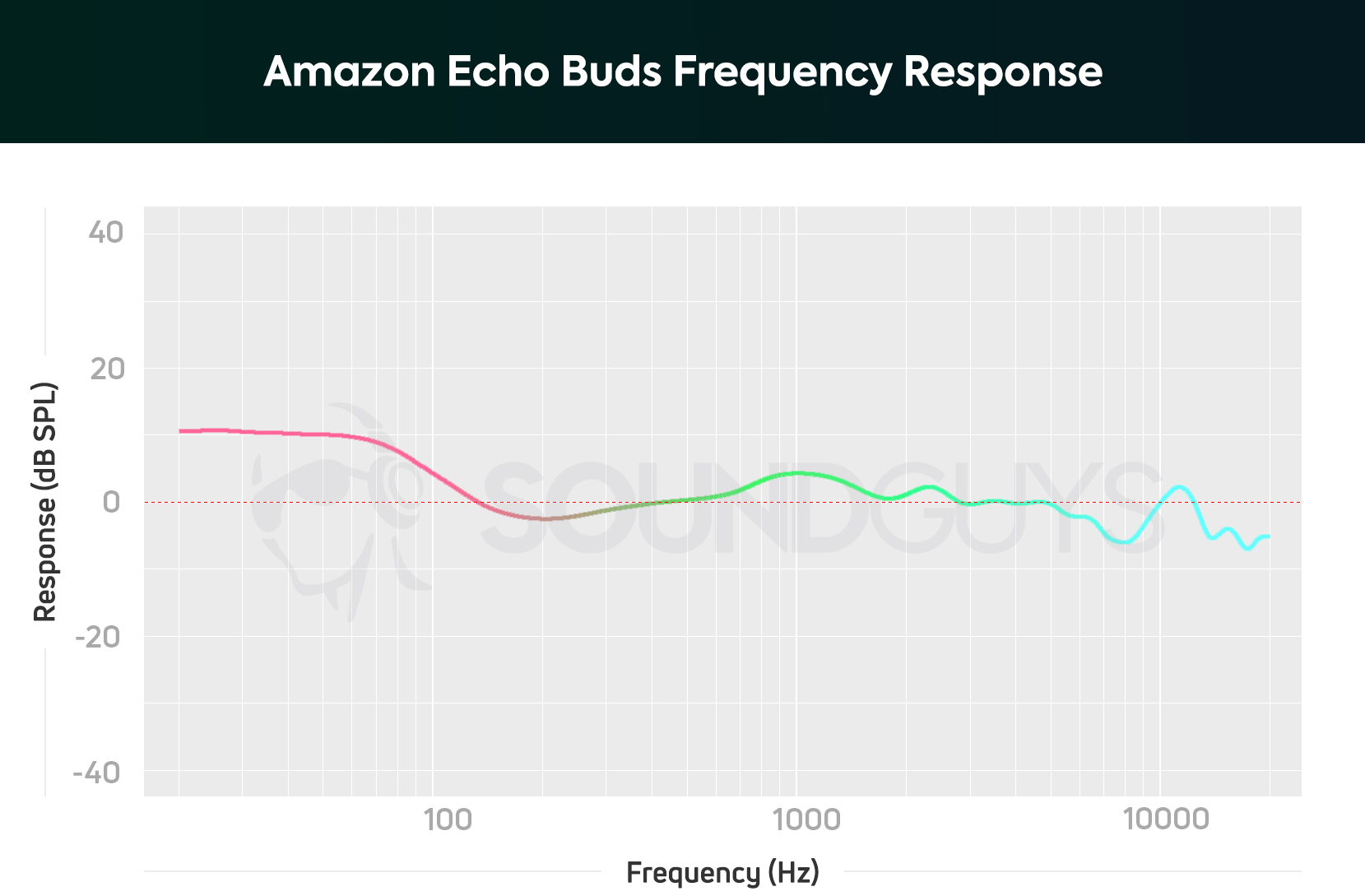
The Amazon Echo Buds frequency response notably amplifies bass notes but not much else. If you enjoy listening to music as a way to appreciate nuanced sounds, well, you’re out of luck. Bass and sub-bass notes sound twice as loud as all other notes, making it incredibly difficult to parse out the ringing of a cymbal hit or vocal detail.
Lows, mids, and highs
William Hinson begins the song Ireland by alternating between D-G chords on an acoustic guitar and the Echo Buds lacking clarity is immediately apparent. The transitioning plucks from D to G sound distorted and the low-E string is amplified far too much relative to the others, a repercussion of the low-end exaggeration.
The Amazon Echo Buds amplify bass frequencies way more than any other frequencies, resulting in loss of clarity.
During the bridge (2:10), Hinson switches the chord progression and employs both Bm and F#m both of which are difficult to distinguish with the accompanying piano chords. That said, Hinson’s voice sounds pretty good because he has a relatively low register, which bodes well for the Echo Buds’ sound.
Are the Echo Buds mic good for phone calls?
The microphone’s response is a bit odd as well: low fundamental vocal frequencies are heavily attenuated, resulting in low male voices sounding a bit distorted. The three-microphone array does work well to register the hotword “Alexa,” but struggles in noisy environments like a coffee shop at peak hours. Additionally, you can hear the occasional compression artifact as well. My voice was relayed well enough to others, and no one asked me to switch to my Samsung Galaxy S10e microphone instead, which has happened before.
Amazon Echo Buds microphone demo:
How does the microphone sound to you?
Should you buy the Amazon Echo Buds?
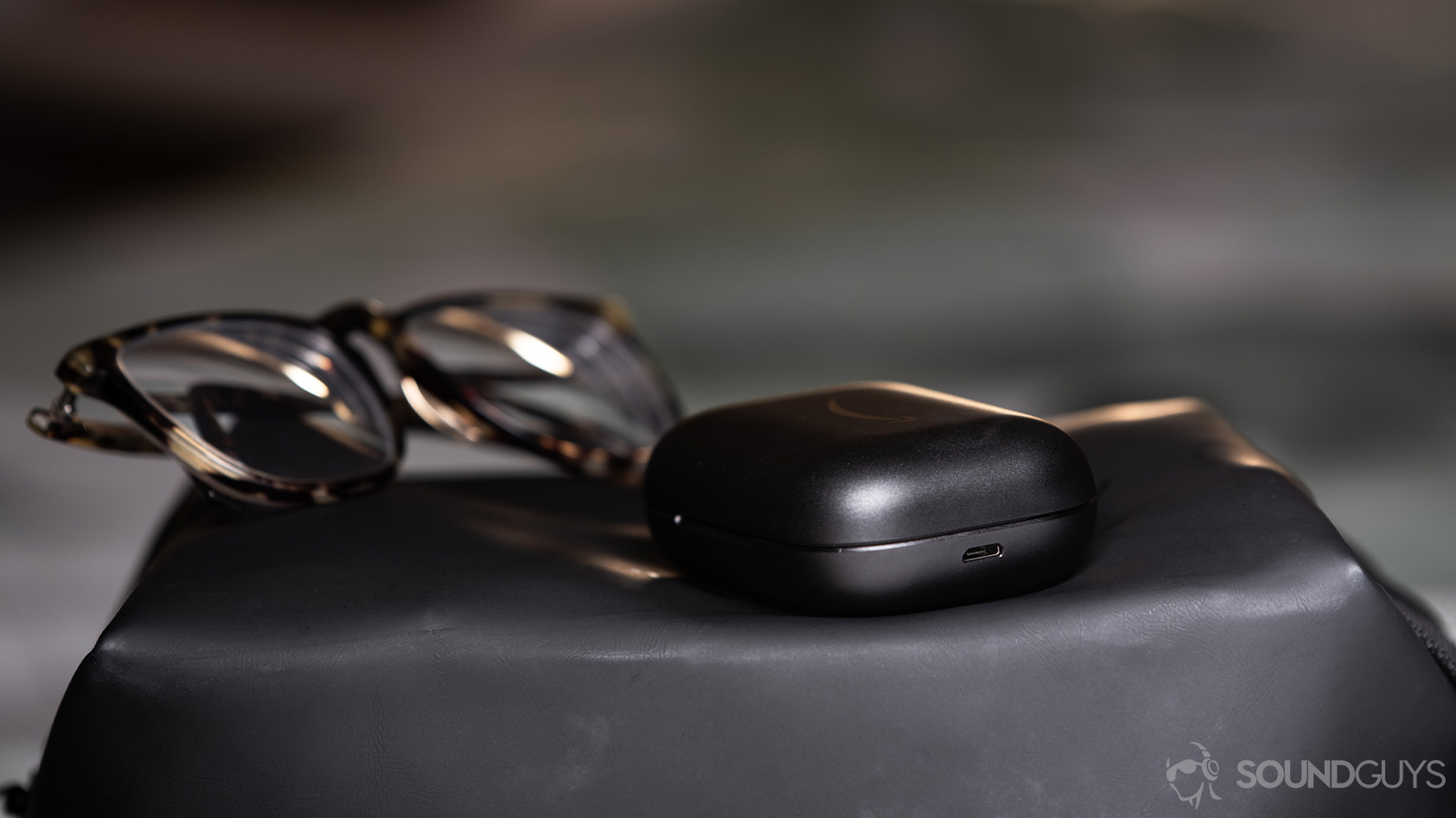
If you can find the Amazon Echo Buds (1st Gen) in stock and are wed to all things Amazon Alexa, then the Amazon Echo Buds can be a good option. Hands-free access to Alexa works reliably with just some hiccups in loud environments. Still, we recommend just getting the Echo Buds (2nd Gen) instead.
What about the Amazon Echo Buds (2nd Gen)?
The Amazon Echo Buds (2nd Gen) are 20% smaller than the first-generation model, and Amazon ditched Bose ANR in favor of its proprietary active noise canceling, which proves more effective than ANR.
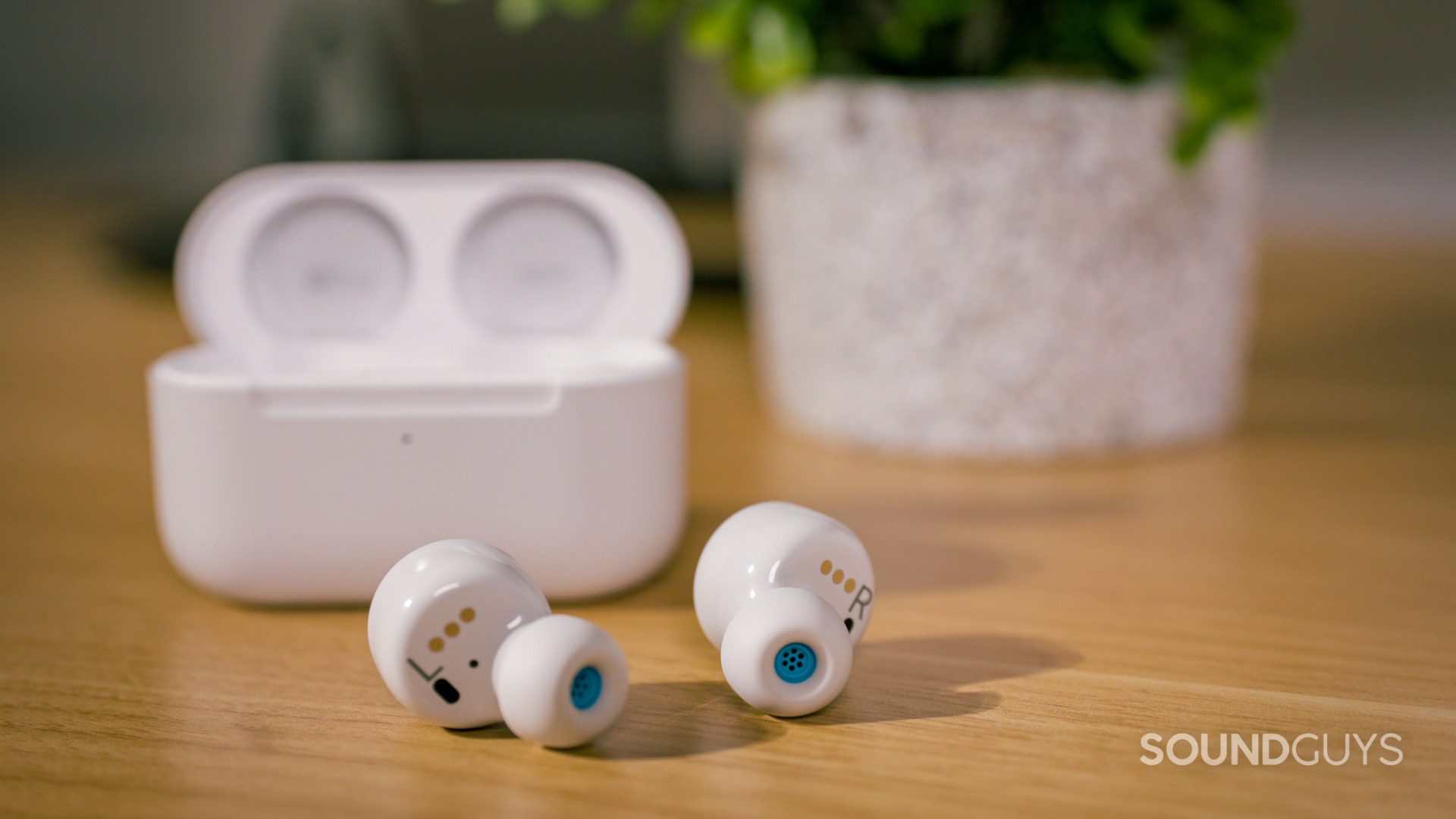
You still get hands-free access to Alexa and an IPX4 rating, which is great for athletes. Amazon upgraded the charging case with a USB-C input and it took a page from Apple’s playbook: you can pay an extra fee for a wireless charging case.
The Amazon Echo Buds (2nd Gen) are available now and the standard bundle with the USB-C case costs $119.99 USD, and you can pay a bit more for the wireless charging case bundle ($139.99 USD).
Amazon Echo Buds vs Apple AirPods Pro
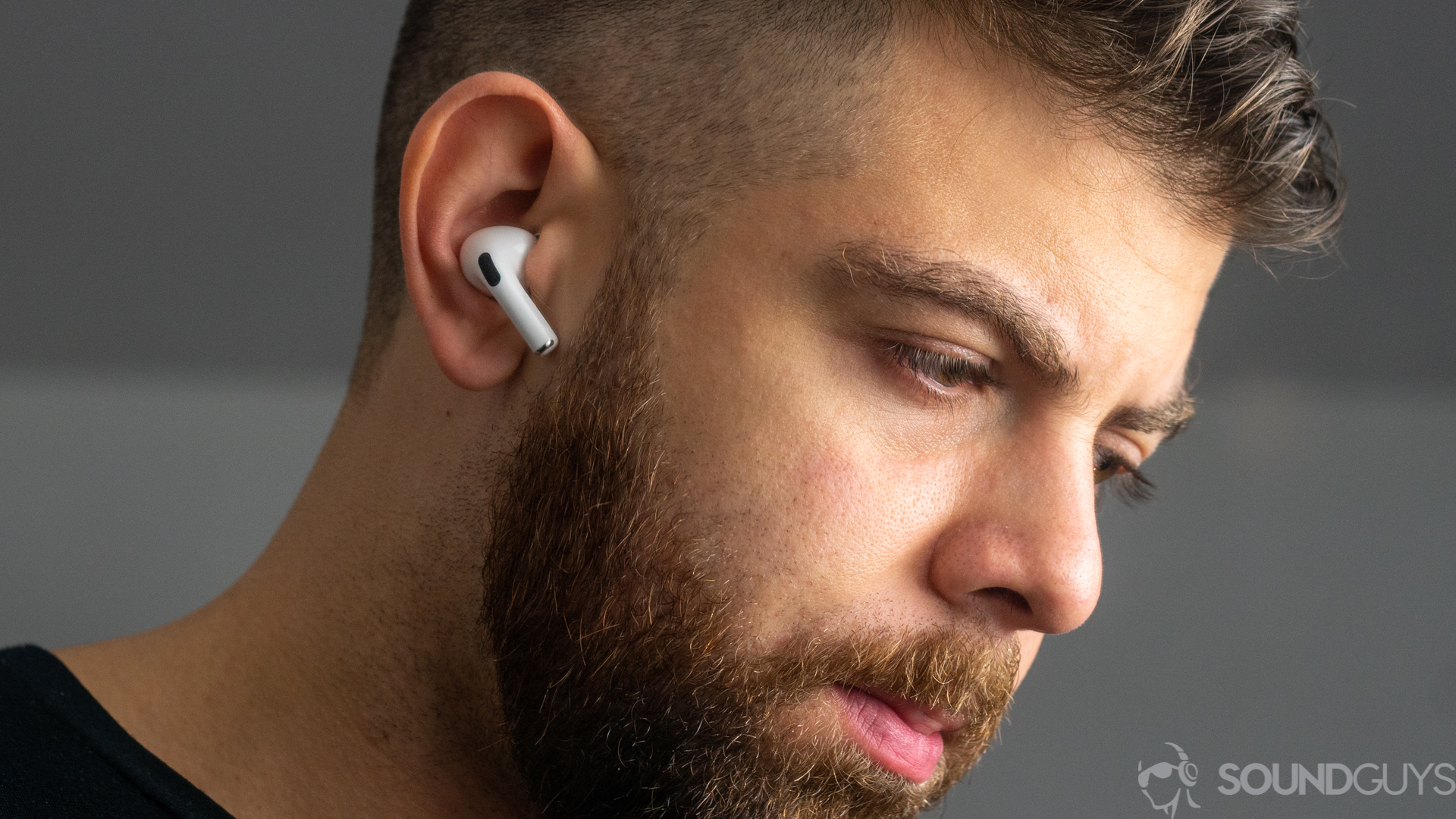
While the Amazon Echo Buds aren’t necessarily cheap, they retail for markedly less than the Apple AirPods Pro — a huge part of the Echo Buds’ appeal. However, if you have a cushy budget, it’s worth tossing your cash at Apple for full-fledged noise canceling and a more polished product.
The Apple AirPods Pro are better than the Echo Buds, particularly for iPhone users because of the H1 chip integration which allows for hands-free Siri access and seamless switching between iOS devices. The AirPods Pro features the same IPX4 rating as the Echo Buds with more comprehensive, intuitive pressure-sensitive controls. What’s more, the AirPods Pro includes a wireless charging case that works with any Qi-certified mat.
Amazon Echo Buds vs Sony WF-1000XM3
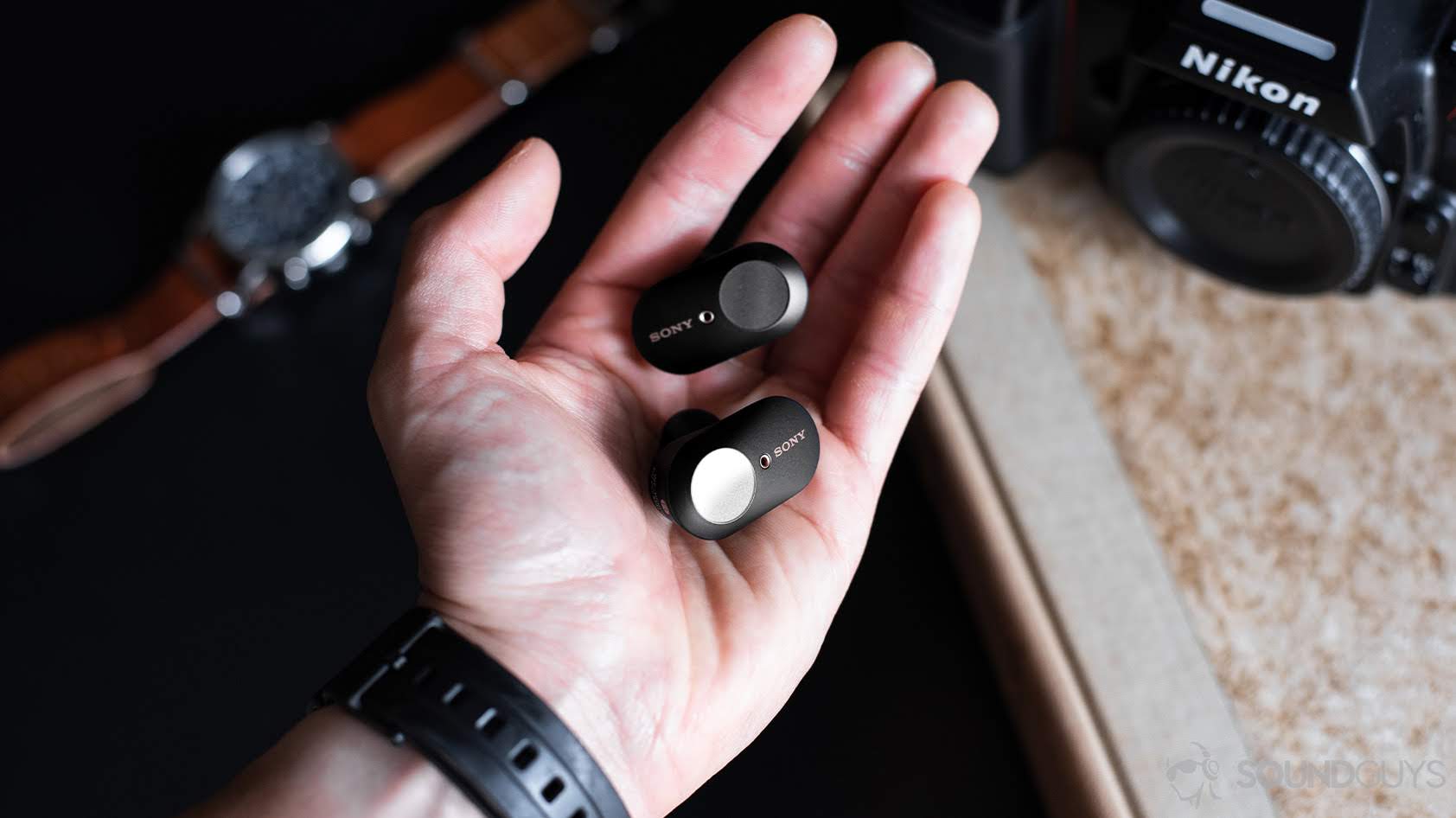
Then there is Sony’s true wireless noise canceling earbuds to mull over. The Sony WF-1000XM3 are a bit old compared to the WF-1000XM4, but it’s still a good pick.
Like the Amazon Echo Buds, the Sony WF-1000XM3 buds each have a circular touch panel for onboard controls. Noise cancellation is barre none, so if you’re a frequent flyer in need of portable ANC, Sony’s buds are your best option. What’s more, sound quality is vastly better than the Echo Buds as Sony uses a Q1ne processor and provides granular EQ adjustments through its free app.
Switch assistants and get the Google Pixel Buds A-Series
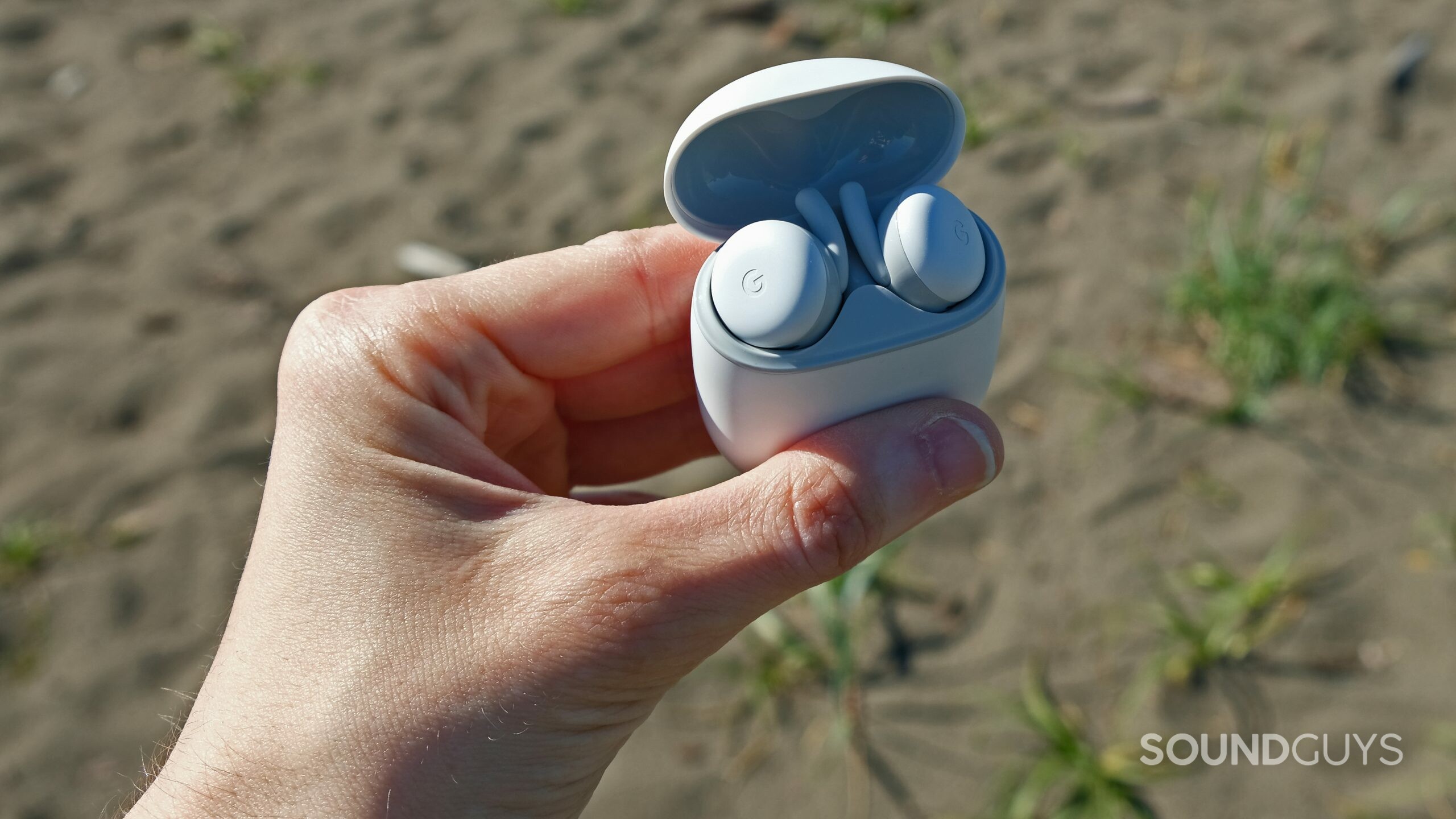
The Google Pixel Buds A-Series made quite the splash, and for good reason: these afford a slew of premium features for a reasonable sub-$100 USD price. Sure, it’s not the best value out there, but it’s Google, also referred to as the Apple of Android. Its new Pixel Buds supports hands-free Google Assistant access, better battery life, and more.
Google’s true wireless earbuds are IPX4-rated, making them just as impervious to water as the Echo Buds. Microphone quality is better than Amazon’s earbuds, which is great for anyone who takes a lot of hands-free calls. The USB-C charging case is brilliantly designed. If you’re looking for the perfect AirPods competitor, the Google Pixel Buds is it, rather than the Echo Buds.
Frequently asked questions about the Amazon Echo Buds
If you’re having chronic connection problems with your Echo Buds, try performing a factory reset. Put the buds in their case, close the case, and press the button for 15 seconds until the LED light turns yellow. Keep in mind, though, that this will reset the earbuds’ settings saved on your device.
Yes, the Amazon Echo Buds support mono listening.
No you don’t need an Amazon Echo speaker for the Echo Buds to function properly. The earbuds are independent of other Amazon products. You do, however, need to download the Alexa app (available on iOS and Android) in order to take full advantage of the earbuds’ smart features.
Initially, the Amazon Echo Buds were overheating within the charging case, which can lead to dangerous outcomes. In July 2020, Amazon addressed this and issued a software update to version 318119151 which resolved the problem. Any Echo Buds purchased after July 15, 2020 will already have this software version. If you’re concerned, you can check the software version in the Alexa app.
First, make sure your earbuds are secure in the charging case. The sensors on the earbuds should line up with the charging points in the case. You may want to remove wingtips from the earbuds to make sure they line up. If they are charging, the LED light on the case should shine green.If one earbud is charging and the other is not, try cleaning the sensors with a dry cloth.
If none of these things work, perform a factory reset by unpairing your earbuds in your phone’s Bluetooth settings. Place the earbuds in the case, close the case, and press the button on the bottom for 15 seconds. The LED will turn yellow when the factory reset is complete. If you are still experiencing issues, reach out to Amazon Echo customer support.
This depends on what model Samsung TV you’re working with as some do support Bluetooth capabilities. To check if your TV supports Bluetooth, go to the settings menu > sound > sound output. If “Bluetooth Speaker List” is an available option, then your Smart TV supports Bluetooth and can be paired with the Amazon Echo Buds or any Bluetooth headset.
If it doesn’t, you can always invest in a Bluetooth transmitter or a pair of TV headphones.
We have a whole guide on how to connect your headphones to your TV.